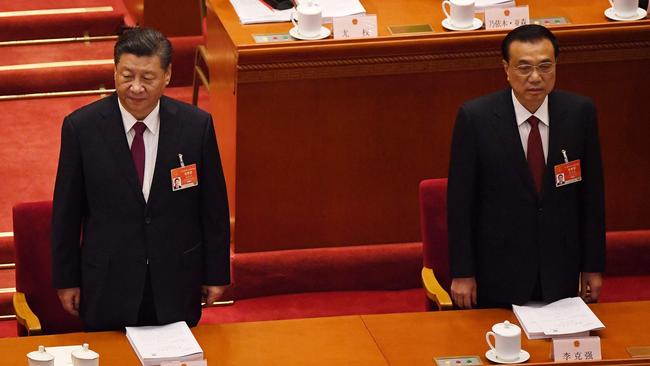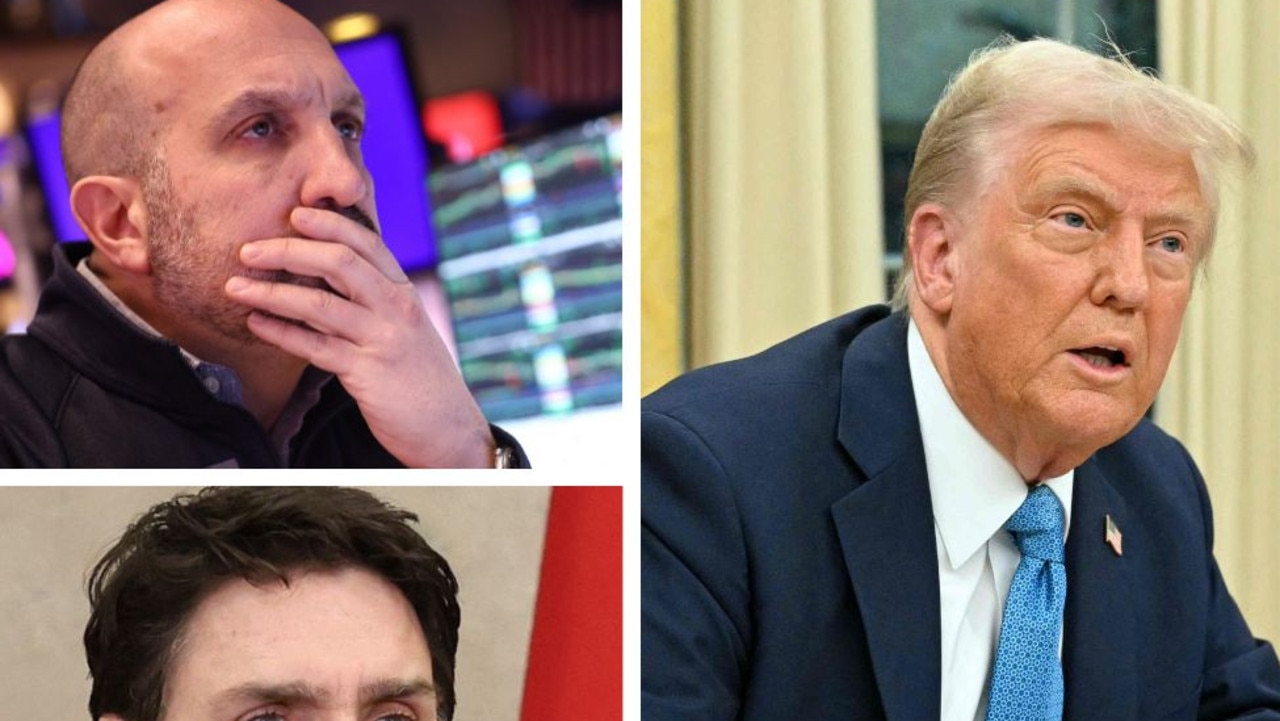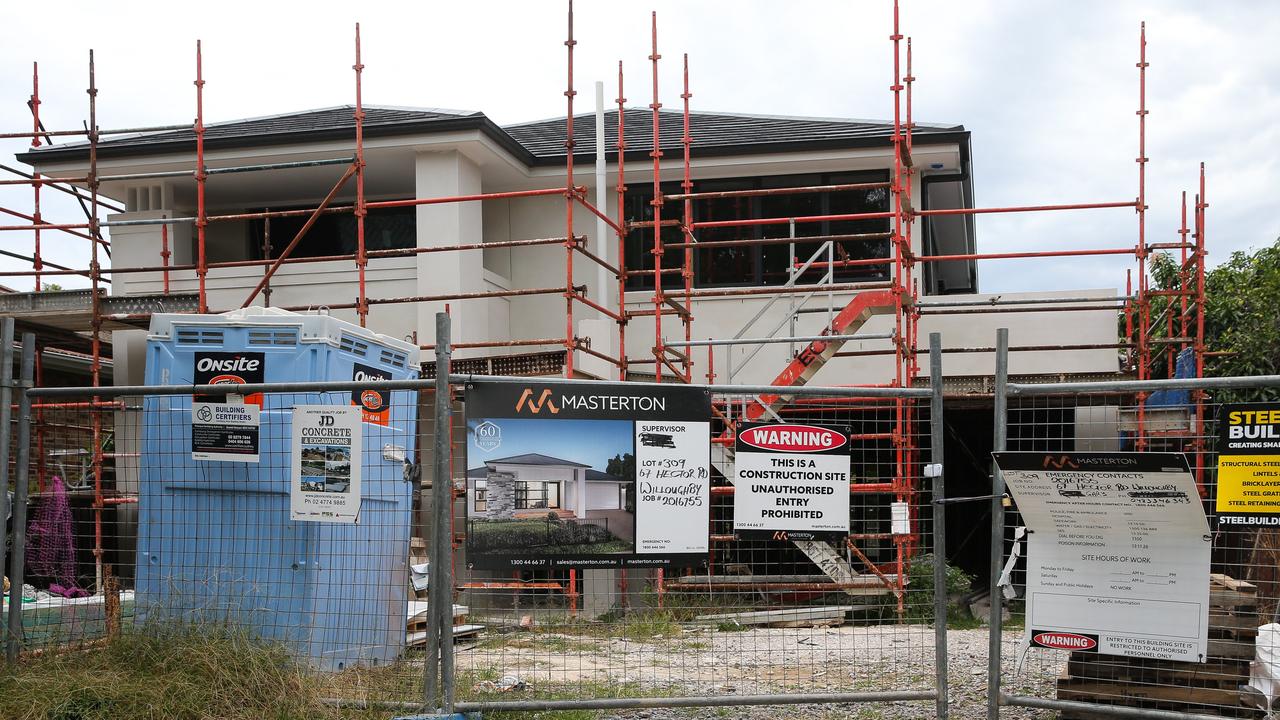’Isn’t enough’: Experts reveal why China’s 19-point plan to rescue economy could fail
China has unveiled a multibillion-dollar plan to rescue its tanking economy – but experts say it won’t be enough to stop the crisis.

Economy
Don't miss out on the headlines from Economy. Followed categories will be added to My News.
China made headlines this week after announcing an ambitious $A63 billion, 19-point plan to bolster its ailing financial system.
But according to a string of experts, it might not be enough to salvage the fortunes of the world’s second-largest economy.
On Wednesday, Chinese media reported that the State Council had decided upon the strategy to stabilise the economy, which has been seriously weakened by the Covid pandemic and ongoing lockdowns alongside the nation’s alarming real estate crunch, and now a record-breaking heatwave and drought, which has sparked mass factory shutdowns.
Under the scheme, billions will be spent on infrastructure to stimulate the economy, along with a string of other measures.
Premier Li Keqiang was full of optimism after the announcement was made, confidently claiming the funds will “expand effective investment, boost consumption and help keep economic activities on a steady course”.

Unsurprisingly, Chinese Communist Party mouthpiece the Global Times echoed that sentiment, insisting that “the economy’s continued prosperity will prevail” and spruiking the “Chinese market’s attractiveness for foreign investors, regardless of global sluggishness at large, reaffirming investors’ faith in the Chinese economy as a stabiliser to world growth”.
But outside of China, the reaction was less glowing.
Emergency package ‘not enough’
According to Bloomberg Economics’ Chang Shu and David Qu, “China’s latest package isn’t enough to turn the economy around”.
“It will create more public demand that will partially fill a growing hole left by a retreating private sector – giving some support to growth,” they wrote.
“What it won’t do is deliver a confidence boost that’s needed to prompt households to spend more and companies to invest more.”
Bloomberg also reported Goldman Sachs economists as saying China’s 19-point plan wouldn’t be adequate to lift the growth rate from the organisation’s predicted 3 per cent.
“We’re getting easing, but it’s not quickly enough to keep up with the pace of deterioration in the broader economy,” chief economist for Asia Pacific at Goldman Sachs, Andrew Tilton, told the publication.
That sentiment was echoed by IG Markets analyst Hebe Chen, who told news.com.au there was likely a lot more pain in store for China.
“What I see from the long list of the stimulus package is that Beijing is deliberately drawing attention away from its beleaguered property and financial troubles and long-criticised Covid Zero policy, which few will argue are the crux of the matter, to a temporary pain killer,” she said.
“While those megaprojects look like the nation is trying to replicate its past success with similar formulas, the economic environment has changed dramatically, locally and globally. “Internally, the property sector, which has bolstered China’s economy for the past two decades, has fallen apart, and no one knows how bad it can be. Externally, the fast-deteriorated relationship between China and most of its business partners is poised to deconstruct the expansive economy that the labour-intensive country has benefited since 1980s.
“Unfortunately, neither of those concerns have been deeply addressed in the 19-point plan.”
Thomas Westwater, analyst for Daily FX and IG, agreed and told news.com.au that “China’s economic woes are potentially just getting started”.
“The fact that China is the only major economy easing monetary policy currently is eyebrow-raising in its own right,” he explained.
“Now, amid broader increases in energy costs, the Asian economic powerhouse is grappling with searing heatwaves and droughts threatening to provide China’s power crunch. Enough so that the government is using drones to dispense rainmaking chemicals into the sky above Sichuan province.

“Power-hungry factories are usually the first to be shut down in China, and that has the potential to delay or perhaps even reverse the recent progress made on normalising supply chains.
“While, for now, the disruptions only represent a marginal hit to factory activity, uncooperative weather can easily exacerbate the situation. An upside reaction in metal prices, notably aluminium, would be expected, but still-weak downstream demand has likely tempered a strong reaction.
“Given that a large portion of China’s factory activity is driven by foreign demand, expansive monetary and fiscal support from the central government may have a limited impact stacked against global central bank tightening that is likely to reduce global consumption.”
The latest measures come amid a turbulent time for China, which is suffering through a devastating drought and heatwave which has led to scores of factories in Sichuan being shut down in a desperate bid to protect power supplies.
This development is a major blow given the province is a major hub for lithium mining, solar panel production and semiconductors with a slew of household-name companies, including Apple and Tesla, already impacted.
China’s National Bureau of Statistics spokesman Fu Linghui recently acknowledged in a press conference that the heatwave had already led to “adverse effects on economic operations”, and things are set to get worse before they get better with soaring temperatures set to remain for some time.
Meanwhile, Chinese homeowners continue to take part in unprecedented mortgage boycotts as the property industry reels.
Hundreds of thousands of citizens have banded together and refused to make their home loan repayments on delayed housing projects, given that in China, it is common that mortgage payments are made before new properties are completed – and act set to affect billions in mortgage loans.
Originally published as ’Isn’t enough’: Experts reveal why China’s 19-point plan to rescue economy could fail




